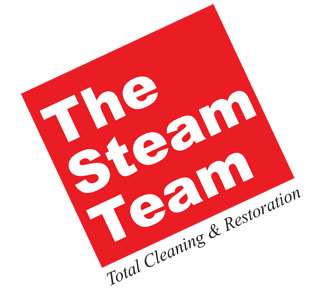Water Restoration: Essential Steps After Suffering Water Damage from a Toilet Overflow
/Water mitigation austin tx
Introduction:
Experiencing water damage from a toilet overflow can be a distressing and urgent situation, demanding prompt action to mitigate the potential long-term effects. Swift and efficient response is crucial to prevent further damage, mold growth, and to safeguard the health and safety of your home and its occupants. In this comprehensive guide, we will outline the essential steps to take immediately after suffering water damage from a toilet overflow, providing a roadmap for effective cleanup and restoration.
Prioritize Safety:
The first and foremost concern after a toilet overflow is safety. Before addressing the water damage, ensure that the affected area is safe to enter. Turn off the water supply to the toilet to prevent further overflow, and if the water damage is extensive, consider turning off the electricity to the affected areas to eliminate the risk of electrical hazards. Wearing protective gear such as rubber gloves, boots, and a mask is advisable to minimize contact with contaminated water.
Identify and Address the Source:
Understanding the source of the toilet overflow is crucial for effective cleanup. If the overflow is due to a blockage, attempt to clear it using a plunger or plumbing snake. If the issue persists, it may be necessary to call a plumber for professional assistance. Identifying and addressing the source promptly will prevent a recurrence of the problem.
Document the Damage:
Before initiating any cleanup or restoration efforts, document the extent of the water damage. Take photographs and videos of the affected areas, including damaged belongings and structural elements. This documentation serves as valuable evidence for insurance claims and can assist professionals in assessing the severity of the damage.
Remove Excess Water:
Time is of the essence when dealing with water damage. Begin by removing excess water from the affected areas as quickly as possible. Use a wet/dry vacuum, mop, or towels to absorb and extract standing water. The goal is to minimize the time water remains in contact with surfaces to prevent further damage and the onset of mold growth.
Address Contaminated Water:
If the toilet overflow involves contaminated water, categorize it appropriately. Water damage is often classified into three categories: clean water (Category 1), gray water (Category 2), and black water (Category 3). Contaminated water from a toilet overflow is typically classified as Category 2 or 3, containing varying degrees of contaminants. Category 3 water poses health risks and requires professional assistance for cleanup.
Dry the Affected Areas:
Thorough drying is crucial to prevent mold growth and further structural damage. Use high-powered fans, dehumidifiers, and open windows to facilitate the drying process. Pay special attention to hidden or hard-to-reach areas, such as wall cavities and subflooring, as these areas are prone to retaining moisture.
Remove Damaged Materials:
After drying the affected areas, assess the extent of the damage to building materials, furniture, and belongings. Remove and discard irreparably damaged items to prevent mold growth and to create a clean slate for restoration efforts. Pay attention to materials that may harbor moisture, such as carpets, drywall, and insulation, as they may need to be replaced.
Clean and Disinfect:
Disinfecting the affected areas is crucial, especially when dealing with contaminated water. Use a solution of water and a disinfectant to clean surfaces, including walls, floors, and any salvageable belongings. Pay extra attention to areas that came into direct contact with the contaminated water, ensuring that no harmful microorganisms persist.
Inspect for Mold:
Mold can begin to develop within 24 to 48 hours after water damage, making it essential to inspect for mold growth promptly. Check hidden and hard-to-reach areas for signs of mold, such as discoloration, musty odors, or visible growth. If mold is detected, consult with mold remediation professionals for safe and thorough removal.
Consult with Restoration Professionals:
While initial cleanup efforts can address visible water damage, the expertise of restoration professionals is often necessary for a comprehensive restoration process. Restoration specialists have the knowledge, equipment, and experience to assess the full extent of the damage, address structural concerns, and ensure that the affected areas are restored to a safe and habitable condition.
Contact Your Insurance Provider:
Notify your insurance provider as soon as possible to initiate the claims process. Provide them with the documented evidence of the water damage, including photographs and videos. Be prepared to provide a detailed account of the incident and the steps you've taken to mitigate the damage. Insurance coverage can significantly aid in the financial aspects of the restoration process.
Implement Preventive Measures:
Once the immediate water damage has been addressed, take proactive measures to prevent future occurrences. Regularly inspect and maintain plumbing fixtures, address leaks promptly, and consider installing water damage prevention devices, such as leak detectors or shut-off valves, to mitigate the risk of future water-related incidents.
Conclusion:
Suffering water damage from a toilet overflow demands a swift and systematic response to minimize the impact on your home and well-being. By prioritizing safety, promptly addressing the source, and following a comprehensive cleanup and restoration plan, you can navigate the challenges of water damage effectively. Whether handling initial cleanup efforts or seeking professional assistance, the key is to act quickly, thoroughly, and with a focus on long-term restoration and prevention.




